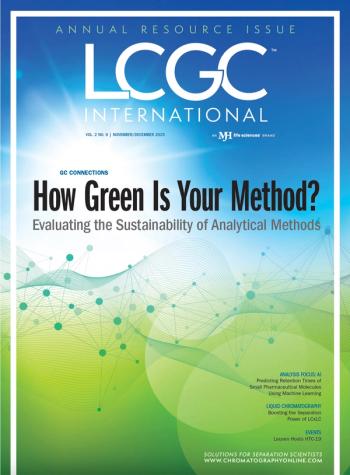
- The Column-07-09-2019
- Volume 15
- Issue 7
Cocaine and Illicit Drug Levels Analyzed in Central London
A group of researchers has investigated the impact of combined sewer overflow (CSO) on pharmaceutical and illicit drug use in central London using liquid chromatography–high-resolution mass spectrometry (LC–HRMS).
A group of researchers has investigated the impact of combined sewer overflow (CSO) on pharmaceutical and illicit drug use in central London using liquid chromatography–high-resolution mass spectrometry (LC–HRMS) (1).
The occurrence of pharmaceuticals, personal care products, and illicit drugs in receiving waters has been the focus of many studies over recent years, mainly to see if there is an effect on ecosystem health and directly or indirectly on humans. The predominant identified source is from treated wastewater effluent, which is sometimes ineffective for removing these compounds. Alternative sources do exist and one potential is raw sewage spills, such as those that occur when sewers fill up during times of heavy rainfall and overflow into rivers rather than backflushing up into streets and homes. Leon Barron, lead researcher on this work, said, “This project aimed to identify which drugs might be elevated in London’s Thames River following such sewer overflows. London’s sewage network dates from Victorian times and it simply cannot cope with a population of more than 8.6 million. The Thames Tunnel project is currently underway to tackle sewage overflows by directing them via a ‘super sewer’ to a relief works in East London. This project served as a ‘before’ snapshot of drug concentrations in the Thames River prior to a major sewer infrastructure upgrade to assess impacts on river health.”
There was no major change in drug concentrations during overflow periods for a selection of commonly used pharmaceuticals. However, stimulant drugs like cocaine and caffeine both rose during overflows for about 24 h after the event and subsided then again between 24–48 h afterwards. Leon commented: “We have performed analysis of London’s wastewater for many years and cocaine concentrations have been steadily rising due to increased community consumption. The concentrations in raw sewage regularly exceed 1000 ng/L. Concentrations of cocaine are generally much lower in receiving water (approximately 1–5 ng/L) because it is normally well removed during wastewater treatment, but concentrations still increased by 10-fold after overflows. This was also matched by concentrations of its primary metabolite benzoylecgonine up to 72 ng/L.” The group has also performed a study in Suffolk county, which is a rural site in the east of England (2). “We have been extending our analysis to biota and in this study we were also able to detect cocaine in all shrimp samples taken from 15 sites across this area. In addition to this, we were able to detect ~50 other drug compounds and pesticides, many of which are illegal in the UK. The sources of these compounds remain unclear and perhaps it is linked to sewer overflows across the UK. We are now extending this study to analyze biota samples from across the UK to assess the extent of the problem. We would expect to see cocaine contamination in urban sites like London, but such a remote area was a surprise.”
References
- L.P. Barron et al., Science of the Total Environment657, 1099–1111 (2019).
- L.P. Barron et al., Environment International 129, 595–606 (2019).
Articles in this issue
over 6 years ago
Thinking Smallover 6 years ago
MilliporeSigma Awards Grants to Three US Biotechsover 6 years ago
The LCGC Blog: HPLC Diagnostic Skills—Noisy Baselinesover 6 years ago
Vol 15 No 7 The Column July 2019 North American PDFover 6 years ago
Vol 15 No 7 The Column July 2019 Europe & Asia PDFNewsletter
Join the global community of analytical scientists who trust LCGC for insights on the latest techniques, trends, and expert solutions in chromatography.



